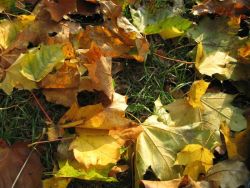Staten Island Industrial Park
Staten Island Corporate Park
Staten Island Corporate Park is part of an Urban Renewal Area, designed to develop vacant land into an attractive and controlled industrial and office environment. The park strives to forge a balance between the corporate world, which provides jobs for many Staten Island residents, and the natural world, with valuable wetlands and rare species. Containing almost 130 acres of swamp forest, and 1,530,000 square feet (or about 35 acres) of office space, Corporate Park has helped modernize the City’s least populated borough while protecting its rich natural history.
Plans for a Staten Island Industrial Park were first drafted in 1959, but many years passed with little progress. Alternative proposals were made for the site, including a harness racing track, a drive-in movie theater, and an amusement park, but none were built. In 1981, the Port Authority selected the area for the country’s first worldwide satellite communications center, the Teleport. While plans drafted by the Department of Housing Preservation and Development (HPD) called for further construction, much of the Industrial Park’s property remained pristine wetland. In 1997, the Economic Development Corporation (EDC) surrendered 156 undeveloped acres to Parks for the creation of Staten Island Corporate Park. An additional 70.29 acres were transferred from HPD to Parks on September 10, 1998, completing the current park area, which is bounded by Pelton Street and Graham, South, Edward Curry and Sommer Avenues.
Corporate Park lies in Bloomfield, a town in northwestern Staten Island. Two centuries ago, the neighborhood was called Merrilltown for a farming family that owned land in the area. Legend has it that the town was renamed Watchogue because a member of the Merrill family, Ike, feared that an ambidextrous neighbor was stealing his young oak trees. Locals who passed his farm would often notice Ike Merrill watching his oaks to ensure that they weren’t stolen. This led people to call the land Watch Oak Farm, which over time became Watchogue. The name Bloomfield was first used in an atlas around 1874. The neighborhood was in the news in 1973 when a tank of natural gas exploded, killing 40 workers. Today, the gas tanks have been removed and Bloomfield is becoming an important area for high-tech industries and other corporations due to the efforts of those involved with Corporate Park.
Staten Island Corporate Park’s four South Avenue buildings, The Atrium, The Plaza, The Glass Park, and the Gardens Office Complex, provide office space for lawyers, doctors, insurance companies, investment firms, and many other businesses. New facilities include a 150 room hotel and conference center, a restaurant, a bank, and a day care center. Corporate Park real estate is attractive to business because it is conveniently located, provides scenic natural views, and offers more affordable prices than land elsewhere in the city. The buildings in this park are surrounded by nature, in the form of gardens, ponds, and trails.
While this park aims to enhance a corporate environment with the beauty of nature, its construction was not without conflict. When projects were believed to threaten protected wetlands and rare plant species, dedicated opposition from local environmentalists pressured builders into altering their plans. This compromise protects Corporate Park’s swamp forest, a valuable habitat for native plants and animals. It contains many plants that are rare in New York State, including swamp or sweetbay magnolia (Magnolia virginiana), persimmon (Diospyros virginiana), possum-haw (Ilex decidua), and primrose-leaved violet (Viola primulafolia). Corporate Park also contains the globally rare Nantucket juneberry (Amelanchier nantucketensis), which has been called “the rarest plant ever to grow in New York City.” To preserve local species, gardens with native flora have been planted throughout the park.
This park’s swamp forest contains areas dominated by Swamp white oak (Quercus bicolor), sweet gum (Liquidambar styraciflua), red maple (Acer rubrum), and pin oak (Quercus palustris). Its understory includes fetterbush (Lyonia lucida), maleberry (Lyonia ligustrina), swamp azalea (Rhododendron viscosum), and highbush blueberry (Vaccinium corymbosum). The herb layer includes many native species such as sensitive (Onoclea sensibilis), virginia chain (Woodwardia virginica) and cinnamon (Osmunda cinnamomea) fern, cardinal flower (Lobelia cardinalis), and turtle head (Chelone glabra). Herons from Prall’s Island often forage in the swamp forest here. The park also contains marshland filled with common reed (Phragmites australis). The ambitious goal of Staten Island Corporate Park is to protect these natural areas while simultaneously fostering the growth of business in the borough.
Check out your park's Vital Signs
Clean & Safe
Green & Resilient
Empowered & Engaged Users
Share your feedback or learn more about how this park is part of a
Vital Park System

